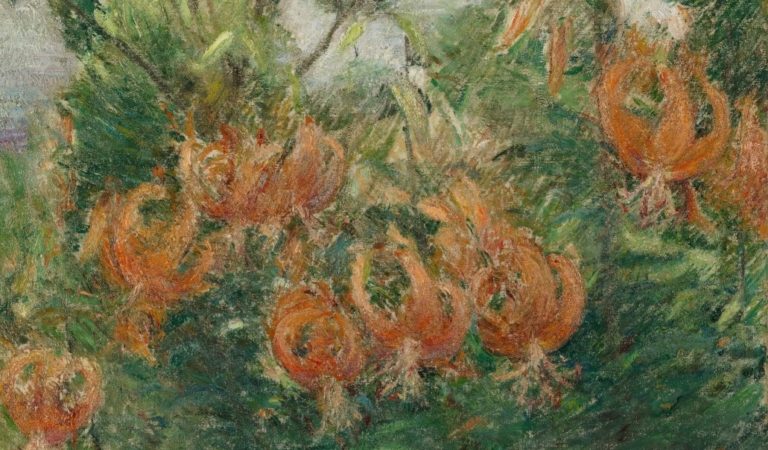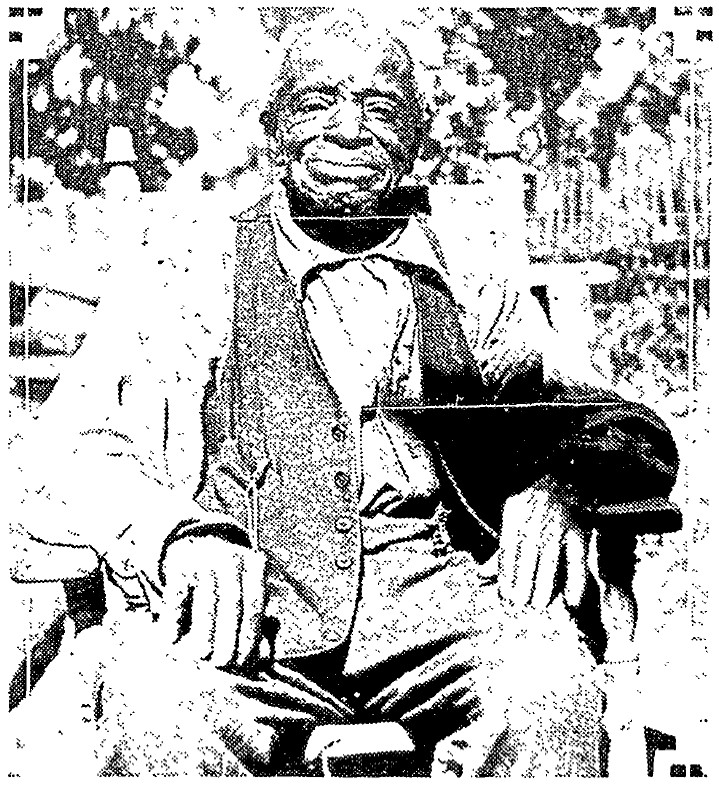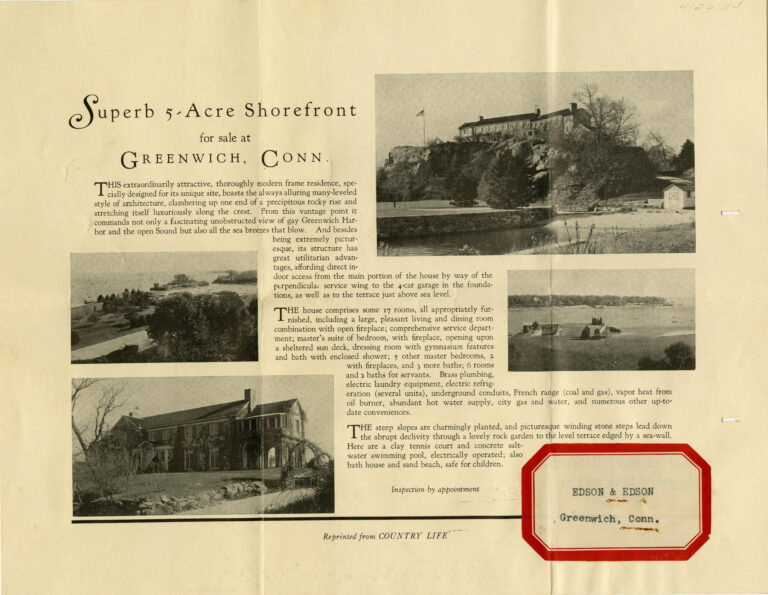The following essay is the second to appear here in anticipation of John Henry Twachtman Online, the comprehensive record of Twachtman’s art by Lisa N. Peters, Ph.D., to be published on the website of the Greenwich Historical Society in 2021. Drawn from the online catalogue, the essay addresses Tiger Lilies, a painting Twachtman created during the years he lived in Greenwich.
The essay is also related to the upcoming exhibition, Life and Art: The Greenwich Paintings of John Henry Twachtman, to be held from October 6, 2021 to January 9, 2022 at the Greenwich Historical Society. Curated by Dr. Peters, the exhibition will include approximately twenty-five paintings Twachtman created of the home and property in Greenwich, Connecticut, where he lived from 1890 through 1899. The show takes a new approach to Twachtman’s oeuvre, considering it to be one encompassing both his art and the physical changes he made with architecture and land as his mediums during his Greenwich years. Two paintings discussed in the essay, The Cabbage Patch and In the Garden, will also be on view in the exhibition.
Maggie Dimock, Curator of Exhibitions and Collections, Greenwich Historical Society
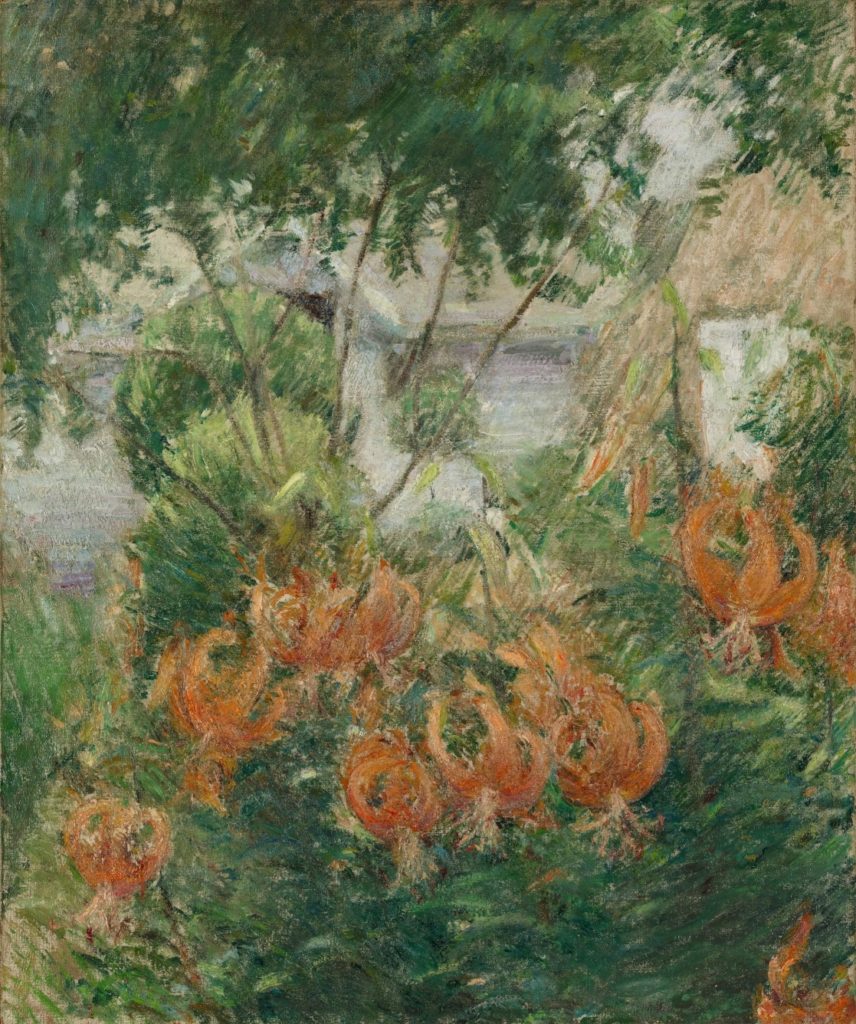
Oil on canvas. 30 1/8 x 25 inches. Private collection.
At first glance, Twachtman’s Tiger Lilies (fig. 1) appears to be an abstractly conceived image. Impressionist dabs of pigment animate and unify the work’s surface. [1] Its design is constructed of tightly balanced shapes, indicative of the influence of Japanese prints, for which Twachtman shared a passion with his close friends Julian Alden Weir and Theodore Robinson. At the work’s center, the backward curls of a cluster of orange-red Turk’s-cap lilies radiate downward, while the bare branches of a tree rise in the opposite direction. [2] The greens in the foreground and in the tree’s leafy canopy frame a glimpse of the north façade of the house in Greenwich, Connecticut, where Twachtman lived with his family from 1890 through 1899, and a root cellar at the right, built into the hill behind it.
However, a close consideration of the painting indicates that Twachtman derived the work from direct observation. In fact, it is possible to determine with near precision the location where he stood to render it. One clue can be found in The Cabbage Patch (fig. 2), which features a broader view toward the back of the house. In it, glimpses of the tall orange flowers can be detected in front of a white U-shaped form at the center-right edge of the canvas, representing a set of three steps with potted plants on their ledges. The steps were situated along the lower of two paths that led to the east side of the home. This same area is clearer in In the Garden (fig. 3), in which Twachtman’s angle was farther to the east.
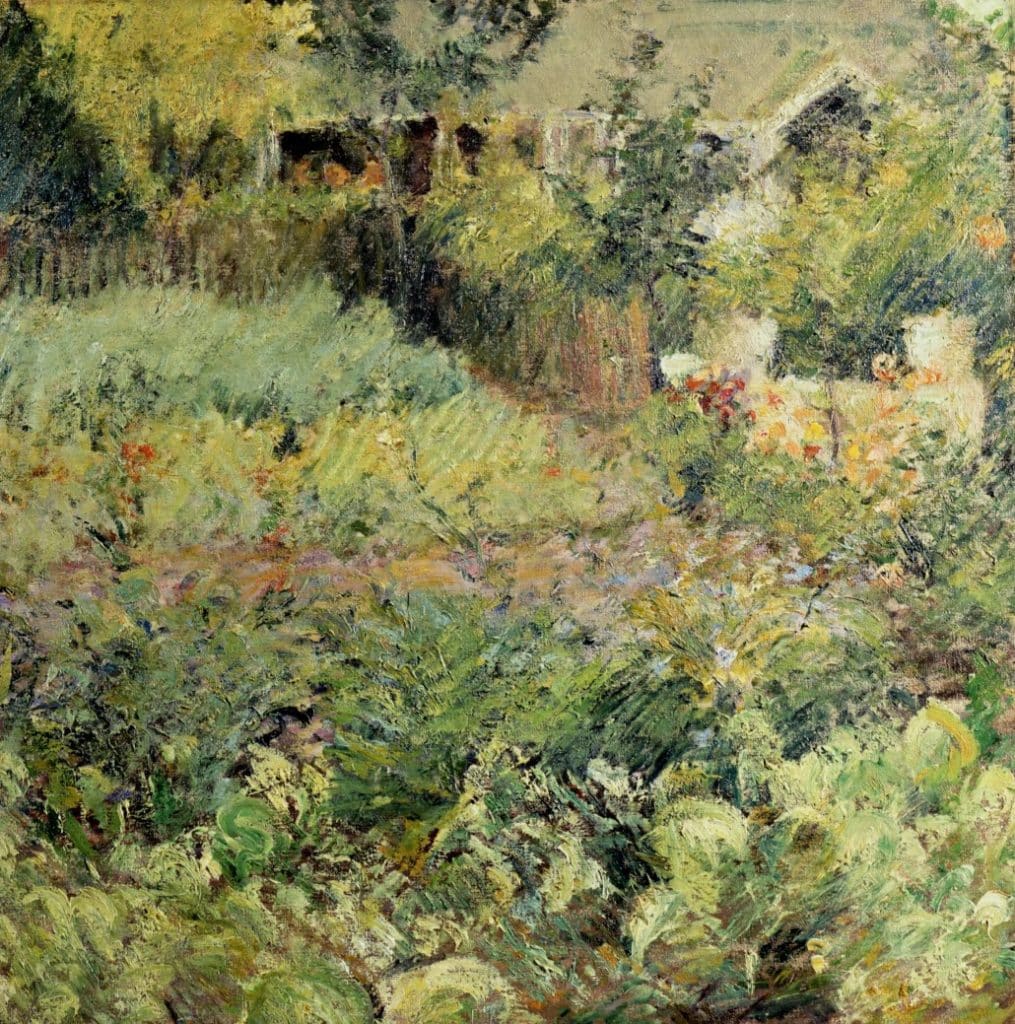
Oil on canvas. 25 x 25 inches. Private collection.
Although Twachtman could have planted the hardy lilies at several locations on his property, the flowers are perennials and it is likely that they bloomed in the same place each summer. More significantly, where the lilies are depicted in The Cabbage Patch corresponds with Twachtman’s vantage point in Tiger Lilies. For the latter, standing below the flowers (Turk’s-cap lilies can grow up to seven feet tall) and gazing on a diagonal to the west, he would have been able to bring into focus the small gable over the back door that was part of a renovation that occurred in 1892–94, as well as the root cellar on a perpendicular angle to the house (visible in Tiger Lilies as a pale orange mass with a white inset door, on the right edge of the canvas).

Oil on canvas. 30 x 25 inches. Private collection.
Twachtman’s stance in Tiger Lilies was probably just to the east of the steps, looking toward the vine-covered stone wall that cut on a north-south axis through the property. These features can be seen in a recent photograph of the property (fig. 4), although the ledges and potted plants are no longer present. Another recent photograph (fig. 5) demonstrates Twachtman’s low and oblique angle in Tiger Lilies. In the painting, he brought out the vivacity of the flowers, their tapered tepals and red-tipped stamens glowing, candelabra-like, against the dense greens that appear to fill the distance between where he stood and the house. [3] His consolidation of the scene’s depth can be assessed by comparison with A Garden Path (fig. 6), yet another painting in which he portrayed a view encompassing the back door at the west side of his home, crowned by the gable cut from the roof. In A Garden Path, the rounded bush to the left of the entryway is one of two that can be seen between the flowers and the doorway in Tiger Lilies. This comparison also reveals that the smaller rounded topiary to the right of the entryway in Tiger Lilies is not part of the garden, but instead belongs to one of two potted plants that stood like sentries on either side of the door.

Photograph credit: Paul Mutino.
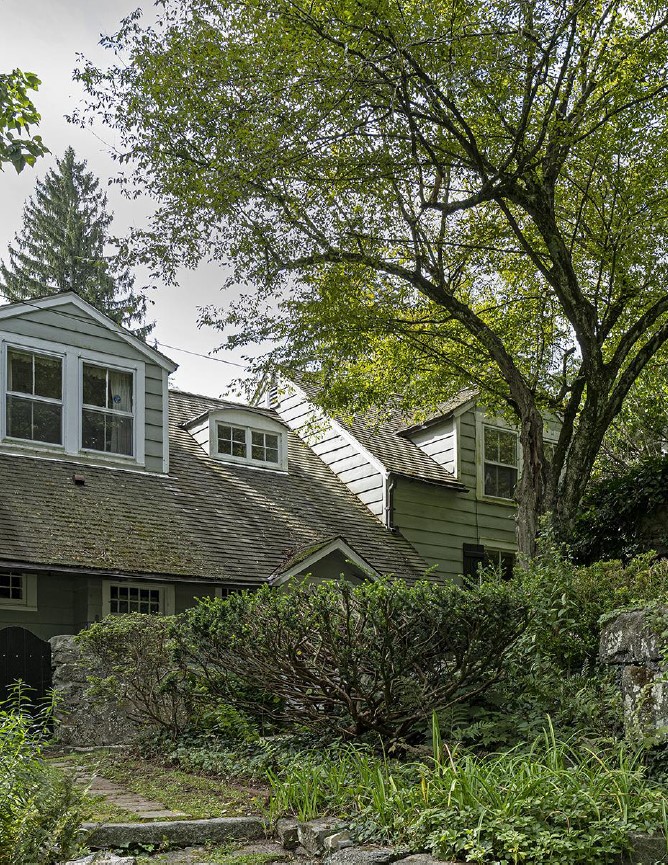
Photo credit: Paul Mutino.
The tree in Tiger Lilies, which appears to be large and directly overhead, poses an interesting problem. [4] In Twachtman’s many views of the back of his home in the winter, no such large trees are present in the landscape near his supposed vantage point, and none were so close to the house that they obscured its roof. What seems most likely is that the tree was a sapling that stood on the east side of the upper path leading to the house. It is probably the tree at the near left in A Garden Path, where the lower branches are similarly bare. Twachtman may have trimmed them to nurture the tree’s future growth. His upward gaze in Tiger Lilies again makes sense, as only the tree’s branches and its umbrella of leaves fell into his line of vision.
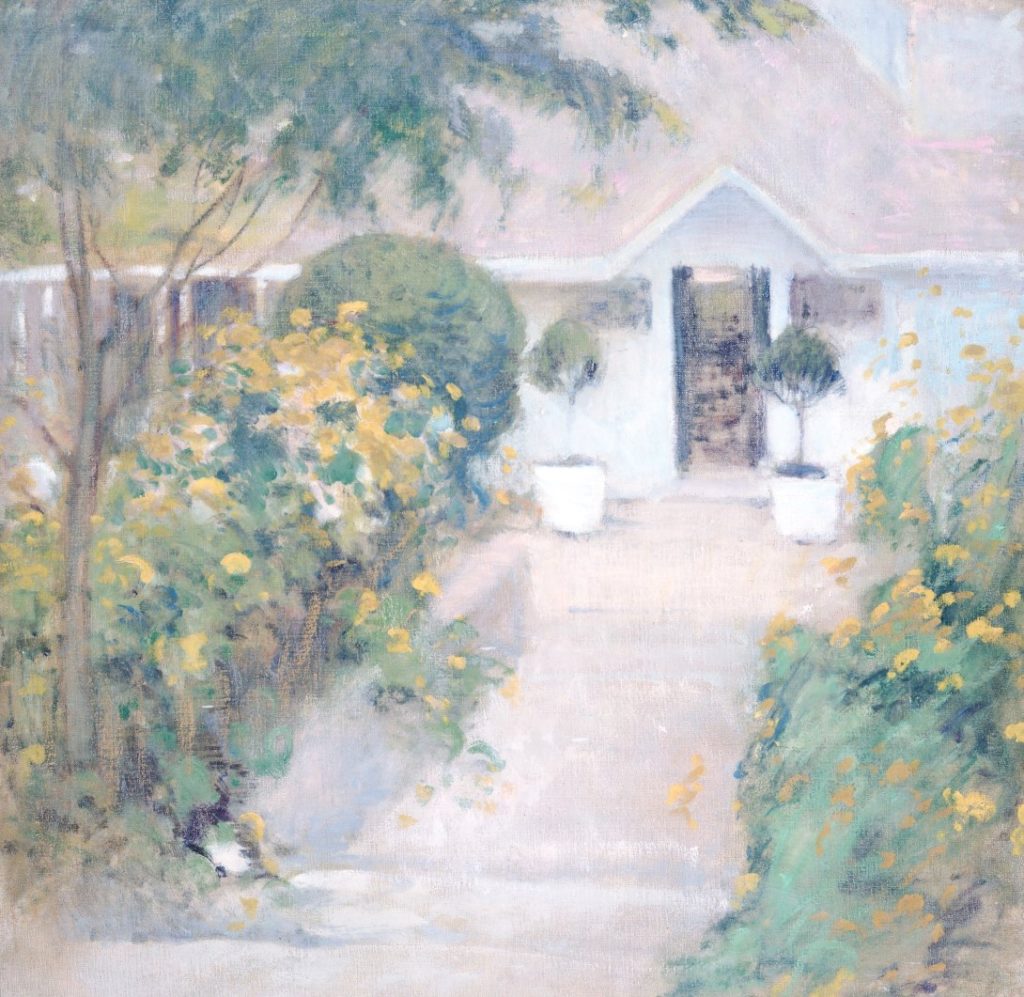
Oil on canvas. 30 x 30 inches. Private Collection.
As in many of his Greenwich works, Twachtman loved seeing the way that the familiar elements of his home and property formed new relationships depending on where he set his easel. Perhaps creating the painting provided him with a means of creating an enduring record of his finite place in the landscape within time’s relentlessness. In the work, the home he had renovated stands for the past and stability (next to the older structure of the root cellar), the seasonal flowers for the present and the transitory moment, and the young tree for the future. In his Greenwich art, Twachtman was interested in problems of perception and design, but he was even more motivated by the attachment he felt toward his home grounds, which resonated with his desire for a sense of belonging and permanence.
Tiger Lilies exemplifies the “great beauty of design” observed by Childe Hassam in Twachtman’s art. [5] At the same time, it is a work Twachtman created in a spirit of self-exploration, as his chosen vantage point enabled him not only to discover new juxtapositions but also to contemplate their meaning. As such, the painting is less about the subject itself than about the way Twachtman experienced it, as through rendering it, he affirmed his relationship to the place he loved.
Lisa N. Peters, Ph.D. is an art historian specializing in late nineteenth-century American art. Among many publications, she is the author of John Henry Twachtman: An American Impressionist (High Museum of Art, 1999).
John Henry Twachtman Online had been made possible by a generous grant from the Horowitz Foundation for the Arts, with additional support from the Lunder Foundation and the Cross Family Charitable Fund.
Notes
[1] For their input and helpful suggestions on this essay, I am grateful to thank Susan G. Larkin, Ph.D.; Maggie Dimock, GHS Curator; and John Nelson, who lives in Twachtman’s former home and is deeply knowledgeable about its history and setting.
[2] Twachtman used Tiger Lilies as the title for a work in pastel and one in oil that he exhibited in 1891 and 1893. These are probably another oil (private collection) and a pastel (Smithsonian American Art Museum, Washington, D.C.), both currently titled Tiger Lilies. The Turk’s-cap lily (lilium superbum), the tallest and most elegant of the native lilies, is similar in appearance to the tiger lily (lilium lancifolium), which is native to China, Japan, Korea, and the Russian Far East. “Tiger lily” has often been applied to a number of different lily species, including the Turk’s-cap. For example, in Old Time Gardens, Newly Set Forth (New York: Macmillan, 1902), Alice Earle described the “Tiger Lily” along with “cultivated stalks of our wild nodding Lily” as flowers growing “very luxuriantly in the garden, often towering above our heads and forming great candelabra bearing two score or more blooms” [pp. 45–46]. For assistance with flower identification, thanks are due to the Morton Arboretum Plant Clinic, Lisle, Illinois, and UConn Home and Garden Education Center, Storrs, Connecticut.
[3] The tepal is the segment of the outer whorl of flowers in which there is no differentiation between petals and sepals (the part of the flower that usually supports the petal and collectively called the calyx).
[4] The tree is probably also that featured in Greenwich Garden (private collection), a work created by Twachtman with the assistance of his son Alden that is similar in composition to Tiger Lilies.
[5] Childe Hassam, in Thomas Dewing et al, “Twachtman an Appreciation,” North American Review 176 (April 1903), p. 555.
